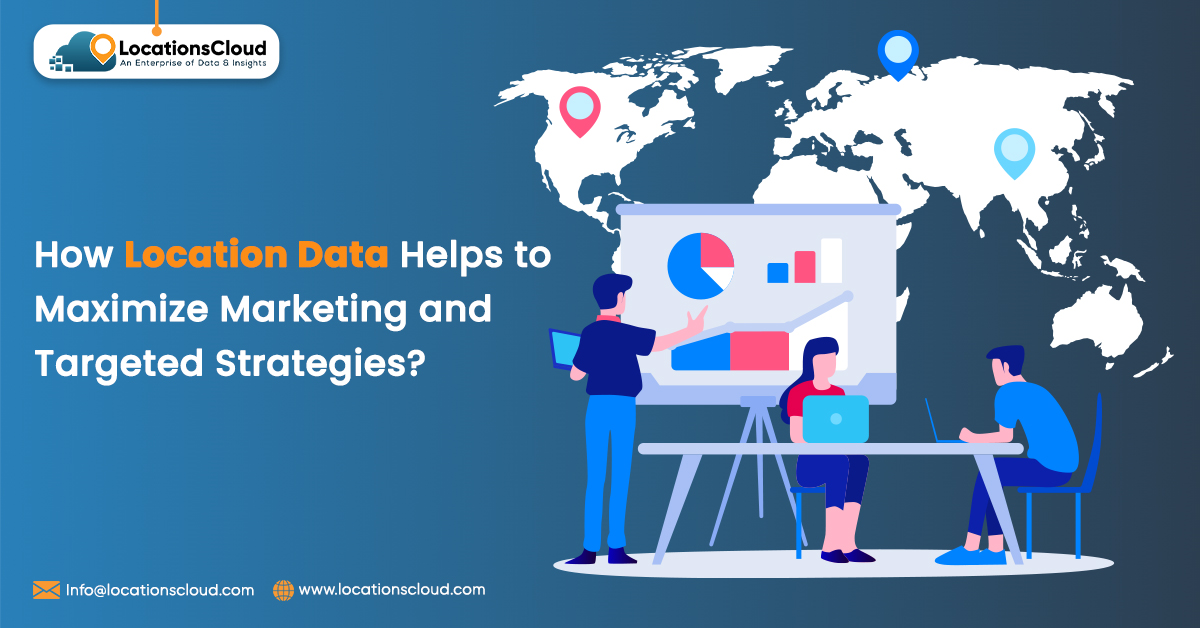
Understand Who Your Target Market Is
The first and foremost part of any marketing campaign is to understand who your target audience is, which becomes even more imperative when using location-based strategies. Through tools like location intelligence and business location data, you’ll be able to gather key insight as to exactly where your customers are living, working, or even visiting. Offering insight from where your target audience exists geographically to elaborating on behaviors, preferences, and interests is beneficial for you in many ways. Whether you are targeting consumers around a retail store or doing B2B location data to connect with businesses in strategic areas, leverage these insights to craft more personalized and effective campaigns.
Set Your Objectives
The direction of your location-based marketing will come from your objectives. For instance, if someone wants more people to come to his brick-and-mortar store, he can use location-based data to pinpoint the exact location and time when any passersby cross by the store. When driving online sales, knowing where your customer is could help in creating targeted digital campaigns. Setting clear objectives, underpinned by location intelligence, ensures that your campaigns will be data-driven and focused on measurable outcomes.
Choose the Right Channels
Different channels will offer different ways to reach your audience using location data. Social media platforms, mobile apps, and text messaging are popular vehicles to execute location-based marketing campaigns. However, integrating these digital efforts with physical marketing materials custom posters, billboards, flyers will go a long way in extending your reach. Handed out at the right place and time-maybe near a store or an event, or inside a business these cards become more than just a means of contacting one; they are a physical reminder, personalized through geofencing to make certain you’re targeting areas.
Measuring Success
It is just the first step when you launch a location-based marketing campaign. After that, success demands continuous monitoring and improvement. Tools monitoring efficiency by store location, business location data, and customer movement insight enable you to improve. Are people responding more to geofenced ads compared with others? Does a certain message trigger lots of conversions? Watch these metrics for real insight into where to place your resources for the greatest return.
Track Clicks, Impressions, and Conversions
One of the most powerful ways to optimize your campaigns is through close monitoring of how people respond to them. With location intelligence, you could actually monitor the number of clicks, impressions, and conversions that your ads generate in specific geographic areas. Take this information and further hone which locations and strategies work best for you, constantly improving your targeting. The same thing happens when, through B2B location data, you are trying to involve businesses in a certain region; monitoring their engagement with your offers may show you some important trends.
Use A/B Testing
One of the best ways to find out what’s working and what isn’t in your campaigns is through A/B testing. You may want to try different ad messages, for example, against different locations using geofencing. Perhaps one variation of a message worked most effectively in one city but another did more to resonate with people in another neighborhood. You could even test different timelines in message delivery to make sure customers are receiving messages at optimal times. Whether it is B2C or B2B, testing and refining is the name of the game in optimizing your location-based marketing.
Getting Started w/ Location-Based Marketing
Once you have a fine-tuned approach, full insight into who your ideal audience is, and defined goals of exactly what you want to accomplish, that is the signal to launch your location-based marketing campaign. First, start by choosing the platform that will be most apt for your needs. Ensure it is one that will seamlessly integrate with in-store location data, business location data, and location intelligence tools that will be used. Make sure to read reviews, compare features, and assess for compliance with data protection regulations when selecting a platform.
Campaign Creation
Once you have selected the right platform, the next big step for running your campaigns is to create the campaign itself. First, define your objective: whether that has to do with increasing foot traffic, online conversion, or scale in B2B locations. Employ super engaging ads and offers that are very strategically aligned with the data insights you have collected from location intelligence and store location data. This involves pairing geotargeted digital ads with geofencing to make sure messages reach the right audience at the right time. In such cases, geofencing may send notifications or offers to the customers once they reach some place near your store, while traditional marketing materials, such as flyers, provide them with a tangible reminder of your brand.
Refine your strategy through continuous measurement of campaign performance, using insight from B2B location data or customers. You may test various variables of the campaign such as message timing about the locations, test and see which locations work best.
Conclusion
In a mobile-dominated world, smartphones and location-based marketing completely revolutionize the way all businesses engage their customers. With location intelligence, geofencing, and location data-whether it be B2C or B2B-businesses can ensure the right message is shown to the right person at precisely the right moment. From digital ad optimization using store location data to data-driven strategies, combining both physical and digital amplifies the power of your campaigns. With platforms like LocationsCloud, one gets to have all the tools and data assets that power result-driven marketing efforts that are targeted, data-driven, and effective.


